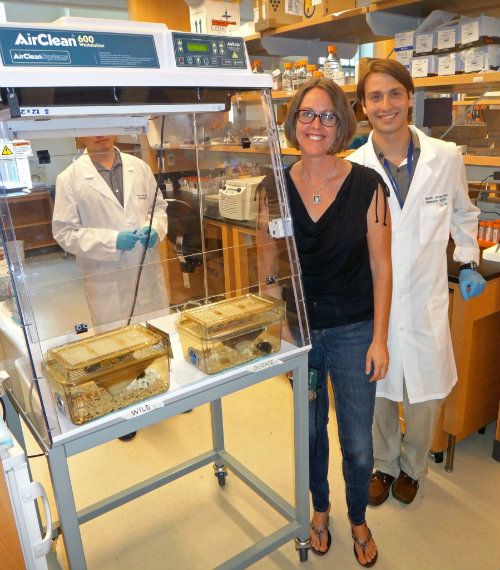“I show Jud’s video all the time to doctors and researchers. It has such an incredible impact! I call the later onset form of Krabbe…Judson’s disease. I wouldn’t be surprised if one day it is known as such.”
— Dr. Patti Duffner, Hunter James Kelly Research Institute
One of the ways Judson’s Legacy is committed to offering hope in suffering is by helping to give Krabbe kids a chance at life on earth. Dr. Patti Duffner is one of the leading researchers for Krabbe disease and the founding Clinical Director for the Hunter James Kelly Research Institute. As we are leading a campaign to build a Myelin Repair Lab at the HJKRI, we thought it would be helpful to hear directly from Dr. Duffner about the impact these monies can have on the lives of future children.
What would a breakthrough in myelin repair research mean for children with Krabbe disease and other leukodystrophies?
Currently the only treatment for Krabbe Disease (KD) is bone marrow transplantation (typically using umbilical cord blood) which provides GALC (the enzyme missing in patients with KD) to the nervous system. However, supplying the enzyme does not help patients who already have damage to the myelin–white matter of the brain. To effectively treat most patients with KD will require repair of the damaged white matter. Supplying the deficient enzyme plus repairing the damaged white matter will provide a true “cure” for many patients.
What is the progress you’ve seen in Krabbe Disease research over the last decade?
Over the past decade, interest in KD has grown in both the basic science and clinical research communities. Studies on enzyme replacement and gene therapy, with and without bone marrow transplantation (Hematopoietic Cell Transplantation–HCT), have significantly improved survivals in animal models of KD. Transplants in patients with Krabbe disease have become increasingly accepted, although limitations of the procedure have also been recognized as it is only effective in patients with KD who have not yet developed symptoms. Therefore, newborn screening for KD is so important; it has the potential of identifying infants with Krabbe disease prior to symptom onset, when they can benefit from HCT. Newborn screening has also broadened our understanding of this complex disease.
Prior to leading HJKRI, you had a very successful career in research related to brain cancer. What made you decide to move into Krabbe research?
For 30 years, my focus in child neurology was on brain tumors in children (particularly in babies and very young children) as well as the long term effects of radiation and chemotherapy. When newborn screening was proposed in New York state, I realized that some of the expertise that I had gained in dealing with rare diseases in neuro-oncology could potentially be helpful in developing an approach to newborn screening. This led to a NY statewide multidisciplinary Krabbe consortium and so much more.
Please discuss the impact Judson has had on your research…and other researchers.
In the 1970’s I wrote an article on “Sudden Blindness in Children.” Krabbe disease was not mentioned. Judson was the first child I encountered who presented with blindness as one of his first symptoms. Because of his videos, I felt as if I knew him personally. (As many times as I’ve seen that video—I still cry). Every time I speak to groups of doctors, I play his video and/or talk about Judson’s life so the physicians can better understand the course of the disease, particularly the rapidity of disease progression. Several children have been diagnosed with the later onset form of KD because doctors in the audience remembered Judson’s story and were therefore able to make the diagnosis in their own patients.
Is there anything else you think would be helpful for the general public to understand about Krabbe & leukodystrophy research?
Krabbe disease is very rare, but lessons learned from this disease can be important in treating other similar diseases. Successes in the delivery of enzyme replacement therapy will help children and adults with a host of other leukodystrophies and lysosomal storage disorders, while advances in myelin repair will help not only patients with Krabbe and other leukodystrophies but patients with multiple sclerosis, stroke and other diseases that damage white matter of the brain.
Will you partner with us to give Krabbe kids a chance at life on earth?
Click here to donate to our Myelin Repair Lab campaign.
